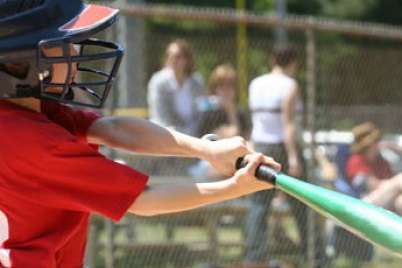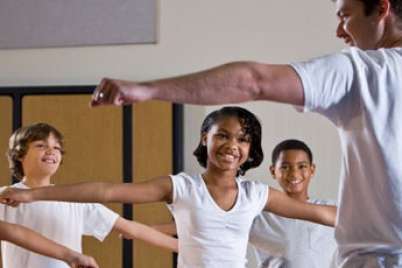
What would it look like if schools were “health hubs”?
Are our students graduating school healthier than how they entered? Those of us working in schools have about 14 years to improve their health, yet obesity and mental health issues have gone up.
Of course, it is not the sole responsibility of the school system; parents and communities also play a vital role in improving our citizens’ health. With that in mind, schools do need to change and adapt to today’s world. Schools need to cater to the current needs of the community. Therefore, I suggest that schools become health hubs.
A health hub is a place where children can improve their emotional, physical, social, intellectual, and spiritual well-being.
Let’s start with the obvious.
Daily, quality, physical education
Schools need to offer quality daily physical education. Students learn by moving and they also need to learn how to move. It’s no longer only about learning sports skills such as kicking, throwing, and catching. Many teachers have embraced the physical literacy approach. It is not uncommon to see different physical activities being offered during physical education classes such as skateboarding, yoga, rock climbing, swimming, and parkour.
We need to offer as many movement possibilities as possible. By doing so, our students will improve their movement repertoire. Also, this allows our students who do not enjoy traditional sports to still be able to fall in love with physical activity.
An inclusive movement culture
In addition to delivering quality daily physical education, our schools need to embrace the movement culture. Physical activity isn’t only done during physical education class and recess.
The movement culture is inclusive. Everybody can do it. You don’t need to be an athlete to reap the benefits of an active lifestyle. There are so many ways to integrate movement throughout the day. We can have a “walk and talk” lesson outdoors. We can do real math by gardening and cooking meals. My favourite mathematics lesson is calculating the average of a variety of physical activities done by students in sixty seconds. For example, all students do jumping jacks for one minute. Once the activity is done, they need to calculate the average.
We can no longer afford to act as individual silos. All teachers, regardless of the subject they teach, need to add movement in their classroom. I once taught Grade 5s the concept of tension during science class with a match of tug-o-war. A few years later, they still talk to me about that lesson. They were engaged because of the kinesthetic experience.
Health lessons and life skills
A healthy body cannot be achieved by only focusing on physical activity. It took me an ambulance trip to the hospital because of a panic attack to realize this. I was in great shape physically having just completed my second marathon. However, I didn’t have enough tools in my toolbox to take care of my mental health.
That’s why we need to offer quality health lessons. During these health lessons, I think students need to learn and practice life skills. They need to learn how to take care of themselves spiritually and emotionally.
Self-regulation is a must. Health class should teach students different self-regulation techniques such as mandala drawing, knitting, meditating, etc.
Also, students should learn how to garden and cook; they can also develop mindfulness techniques by growing, preparing, and eating their own food. Schools can create partnerships with farmers markets. Farms can rent part of the schoolyard and in exchange, they teach students how to garden. These are all important life skills that I feel are often neglected in many schools. The body in its entirety needs to be healthy.
Create spaces to suit the needs of students
If we’re serious about improving our students’ health, this needs to happen until graduation. Intermediate and high school students need recesses and schoolyards that cater to their needs. Why not have schoolyards that inspire movement? Let’s build skateparks, skating rinks, and parkour obstacle courses. This is what gets teenagers moving. They should also have more physical education and health classes. With all of the life changes and social pressures of being a teenager, this is when they need physical education and health class the most.
I have a favour to ask you. I want to know what our Canadian schools are doing to help our students. What are the awesome and inspiring stories and ideas from our wonderful schools? Reply in the comment section below, or on Facebook and Twitter. I would love to hear from you.






Why was Active Transportation, in particular cycling, not mentioned at all in here? Kids who walk, bike, scoot or other active modes of transportation to & from school are more able to focus, have fewer behavioural problems, and are more healthy than kids who get driven to school. School buses are necessary for many kids to get to school, but they don’t need to drop the kids off at the front door: they should stop a few blocks away and have the kids walk the rest of the way.
I’m also in support of having mini exercise bikes, mini trampolines, skipping ropes, treadmills, even beanbag chairs, in every classroom – many kids can call themselves or focus on a difficult task by spending 2-3 minutes moving their bodies.
Skateparks are fine, but what about bike parks? These should absolutely be encouraged at every opportunity.
Great ideas that could for sure have been added.
Do you know of any schools who do that?
Bikes in the classroom is a great idea. It’s something I started in 2012. My students have cycled over 50 000 km on our spin bikes and traveled across Canada 6 times.
Here’s more info: www.edcan.ca/award…6-winners/